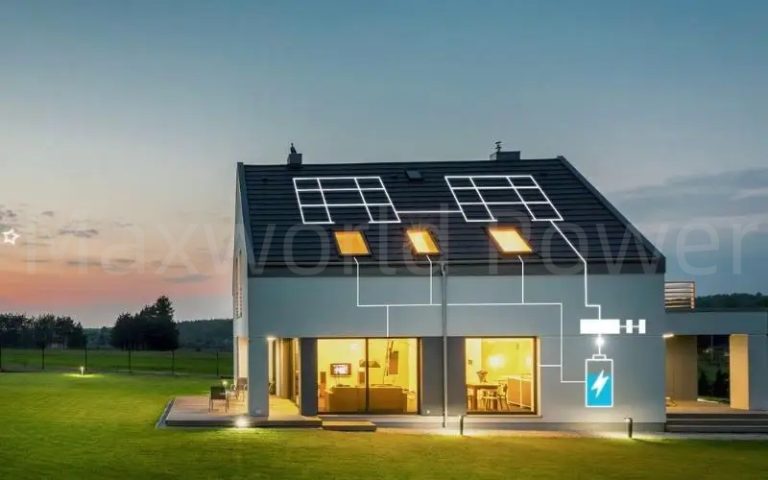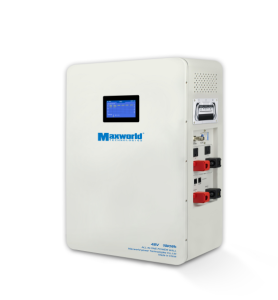
For a long time, a lot of people believed that energy storage was only for off-grid or novelty homes. These days, this is a field with a lot of promise due to advancements in technology and the rise in domestic renewable energy.
Energy storage is a great fit for the “smart home” concept. If you have an Economy 7 tariff, which is less expensive during specific hours of the day, you may charge the batteries with grid electricity at a discounted rate and monitor your energy consumption online with many smart storage systems.
Energy storage is beginning to be seen as a component of grid-level smart energy management. In exchange for favorable rates, consumers may use existing energy storage devices—such as hot water cylinders—in the future to store extra electricity.
All very interesting, but should you buy energy storage right now, and what should you think about?

To keep or not to keep
In periods of high supply and low demand, if your home is equipped with a renewable energy generation system (like solar PV), you will unavoidably produce more electricity than you consume, with any excess being exported back into the grid.
Many people are being compensated for this through a feed-in tariff system.Rather than being paid for the actual amount of electricity they export, most people get paid for the amount of electricity they produce and are supposed to use at home. This process, known as “deeming,” is often set at 50% of the overall generation. Therefore, you will receive the same payment for your export but will save money on electricity bills for your import if you can store some of that excess electricity and use it later when you need it.
But things are about to change. Smart meter readings will be used to calculate payments as a result of the deployment of smart meters and the new Smart Export Guarantee (SEG), which requires large energy companies to compensate individuals for their exports starting in the next year. All PV users may be impacted by this, especially those who have added batteries or diverters that are linked to a hot water cylinder. unquestionably something to ponder if you’re thinking of storing in this situation.
In the end, clients adding a battery system to an already-existing PV system must ensure that any modifications to the overall setup won’t have an impact on ongoing Feed-in Tariff payments.
A trending subject
Since heating and hot water use account for the majority of a home’s energy consumption, storing energy as heat is another viable alternative. Expanding the use of your hot water cylinder by attaching a renewable system to it is the least expensive option to store energy as heat.
Innovations like the heat battery from Scottish startup Sunamp may be the answer if you’re searching for something more advanced than a diverter and more space-efficient than a thermal store. Both the grid and renewable energy sources, such as heat or electricity, are used to power its heat battery. It generates instant hot water at mains pressure by capturing and releasing energy from various sources using what are known as “phase change materials,” which are really just special salts.
Expense factors
Unfortunately, more sophisticated alternatives for connecting and managing inputs to thermal stores are not inexpensive, nor are batteries. If you want to engage in storage now rather than waiting for prices to drop even further, you’ll need the following things to line up. Prices are predicted to drop dramatically over the next few years.
Whether or whether the numbers add up depends on how much energy you consume, when you use it, and how much energy your renewable system can produce. This is a common problem with household energy difficulties.
Here are some approximate expenses for a solar PV system including a battery and an inverter:
A 4 kWh battery costs £5,000 and lasts for about 9 years (the price and longevity of the battery vary based on its capacity).
inverter: £800, about 12-year lifespan solar photovoltaic Size 4 kWp = £6,200; total cost of initial installation (including PV, inverter, and battery) = £12,000
However, things are not quite so cut-and-dry. With a 25-year lifespan for a new PV system, you could need to install many batteries and inverters during that time. In light of this, it is safer to estimate that the cost of the three batteries and the two inverters will come to about £22,800.
Is it worthwhile to store solar electricity?
It probably wouldn’t make sense financially or practically if you already have a tiny solar PV system with little overflow to put into a battery or other storage solutions. It’s also improbable that newly constructed homes with tiny PV systems integrated into their plans will gain.
However, it would be worthwhile to think about your storage alternatives if you put a sizable number of panels on your roof and nobody uses the electricity produced during the day.
“Having a large solar PV system installed around 2010 when the Feed-in Tariff was highest may mean it’s more financially viable to invest in storage, whereas for others it may mean a dip in savings,” said Ian Cuthbert, program manager for Sustainable Energy Supply Chain at Energy Saving Trust. It’s crucial to consider the advantages and disadvantages in light of your unique situation. However, it would make sense to invest some of your large profits from the Feed-in Tariff toward achieving more self-sufficiency.
It is important to remember that many consumers consider factors other than only cost when deciding whether to install energy storage.People who want to contribute to local and global sustainability find it very appealing to reduce their carbon footprint and become less dependent on grid electricity supply.
Options for energy storage
The most popular kinds of energy storage solutions, for both heat and electricity, are listed below.
Electricity sources include lithium ion batteries, which are more expensive but smaller, lighter, and have a longer lifespan than lead acid batteries. Lead acid batteries are typically used for large storage systems, like as for off-grid properties.
Warmth: thermal reservoirs Millions of households have hot water cylinders; however, the cost of connecting one to renewable energy sources can vary greatly, from several hundred pounds to several thousand pounds, based on the quantity and control of the inputs.
Heat batteries may be charged by heat sources, electricity, and the grid. Although they are more costly than standard hot water cylinders, they are more space-efficient.
Important things to take into account
It is a common misperception that all battery systems provide backup power in the event of a power outage.While some systems can be set up to temporarily provide some basic power for necessities, not all of them can, and it’s unlikely that any will provide you with a full home supply during a power outage. Ask your installer if the system they are proposing will have any backup power. You might believe that the additional cost of a grid backup system is not justified if your main goal is to minimize the amount of electricity the house uses from the grid.
Although the circuitry and controls of electricity batteries can be rather complex, the batteries themselves are not very difficult. They can be delicate, therefore in order to prolong the battery’s life, the timing and intensity of charging must be optimized right away. It might rapidly deteriorate without this attention. With heat batteries and thermal reserves, this isn’t the case. As a result, you might have to charge the battery from the mains during a time when there isn’t much sunlight, however if the system is built properly, this shouldn’t happen too often. Furthermore, to avoid this, certain battery systems incorporate a “winter mode.”
Converging technologies will shape the future.
Solar PV and storage are already being marketed as a combo. – but in the upcoming years, there probably will be even greater connectivity and convergence of energy-generating and consuming gadgets with batteries.
The utilization of electric vehicle batteries as storage will probably be a familiar sight in the future, allowing homeowners to balance their transportation and home energy needs. In a two-way energy transfer, your home storage system and your vehicle serve as each other’s transportation. Automakers are aware of the opportunities in this field, and some are even entering the solar photovoltaic industry.
Next actions
We suggest reading the solar storage consumer and technical guides from the Building Research Establishment (BRE) for more information on energy storage.
What comes next, assuming you’ve not been discouraged and you believe storage would be a good fit for you and your house? It’s time to consider the product you wish to use and locate an installer.
Installers of renewable energy increasingly provide storage in greater numbers. Ian advises: “You should inquire about available products and get in touch with installers for additional information.” As always, we advise using only MCS-certified renewables installers and battery installers who have been approved by the battery manufacturer when combining with a renewables system. However, you should be aware that MCS certification does not cover the storage system or its installation.
Concerns about the installers
To make sure you receive the ideal energy storage system, it’s crucial to speak with possible installers. Ian advises you to question your installer about the reasoning behind each choice they make. To get you going, here are some questions:
What makes having an energy storage system recommended for me?
What is the estimated amount of avoided grid electricity that the system will save?
By how much will I save in carbon?
In what way have you considered the specific energy usage patterns I have at home?
What is the price of installation and battery replacement when necessary?
What is covered by the warranties and how long will the batteries last?
What information is necessary for me to maintain and manage the system?
How many kilowatt hours (kWh) of useful storage capacity is there?
Which circuits may I operate in the event of a power outage?

